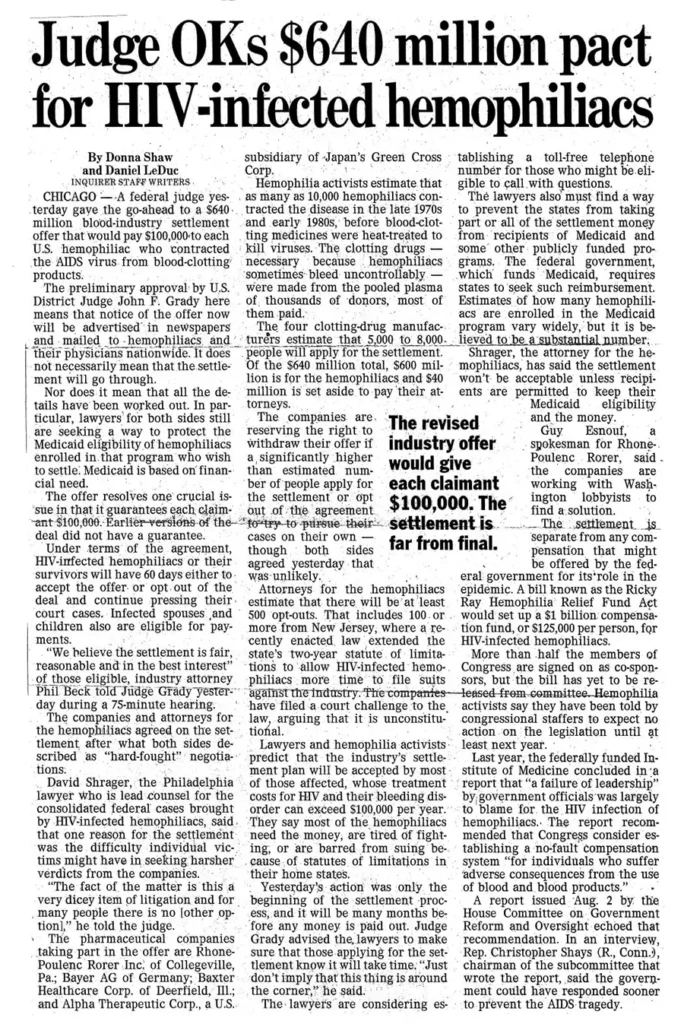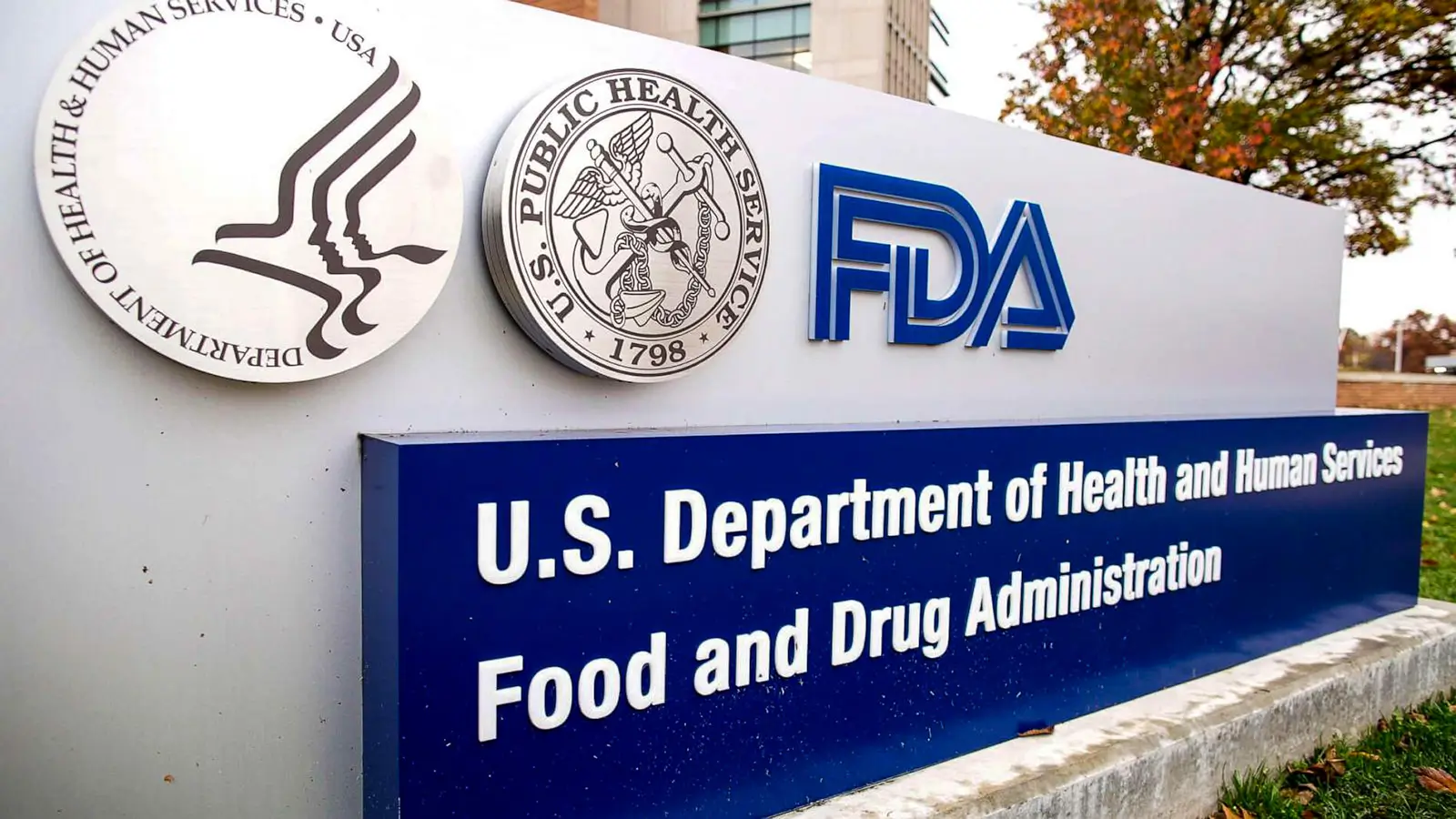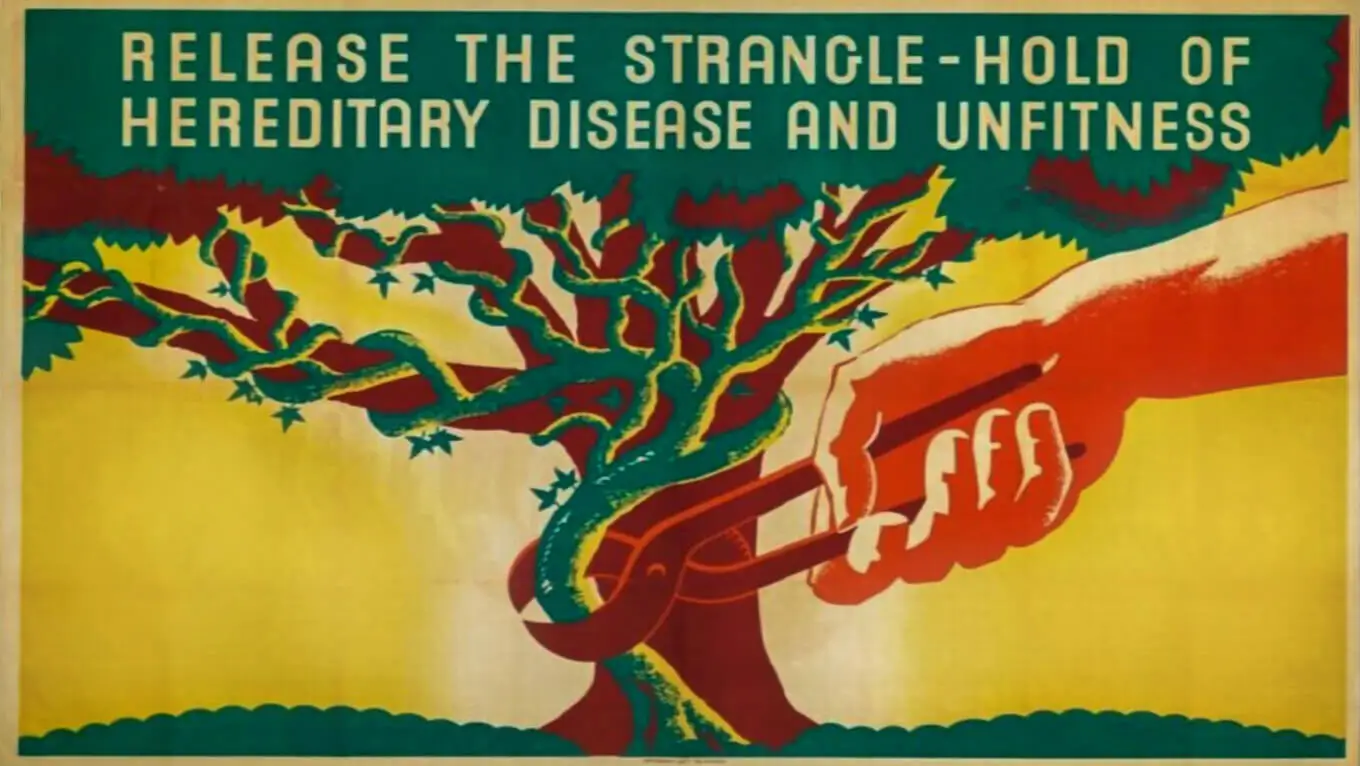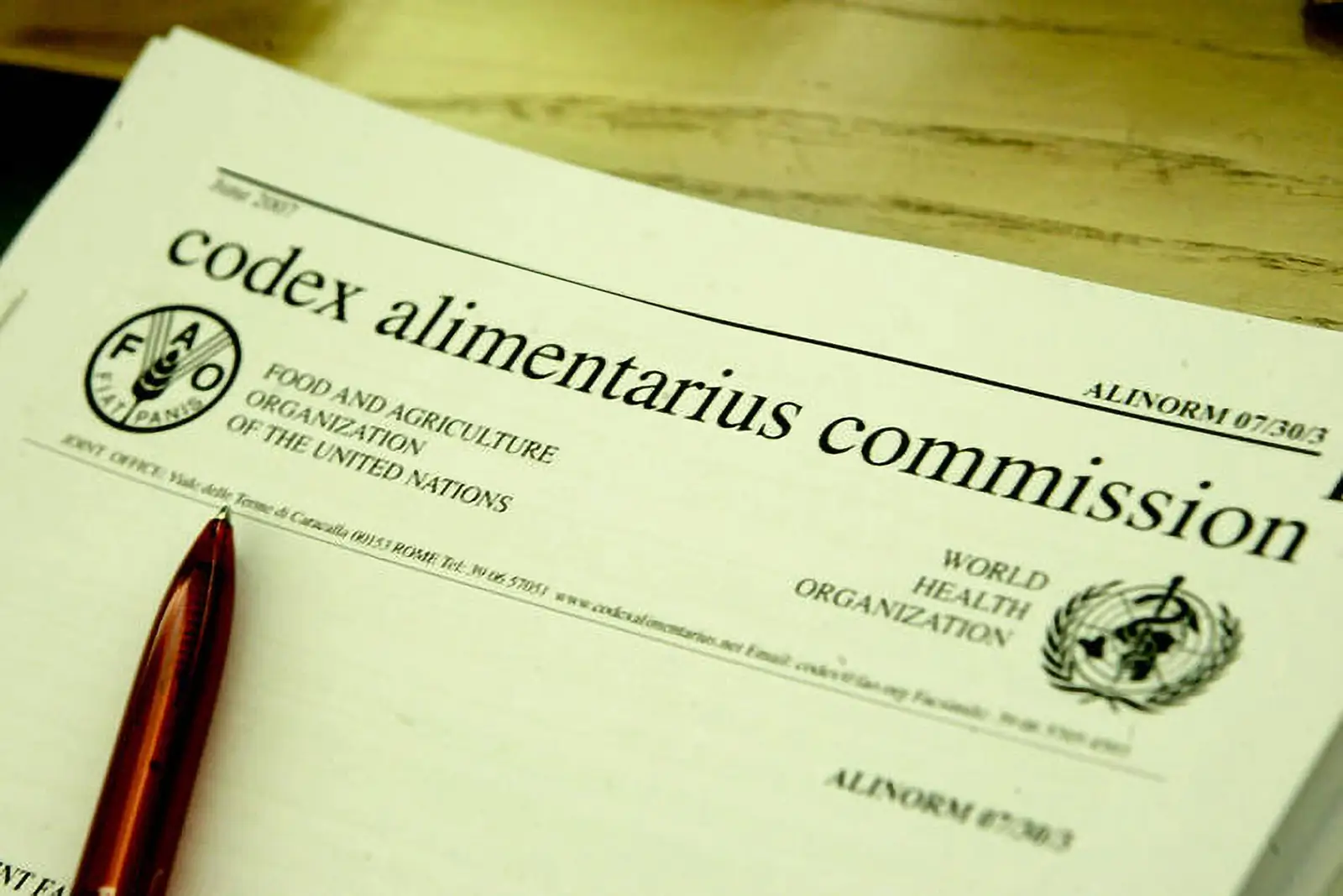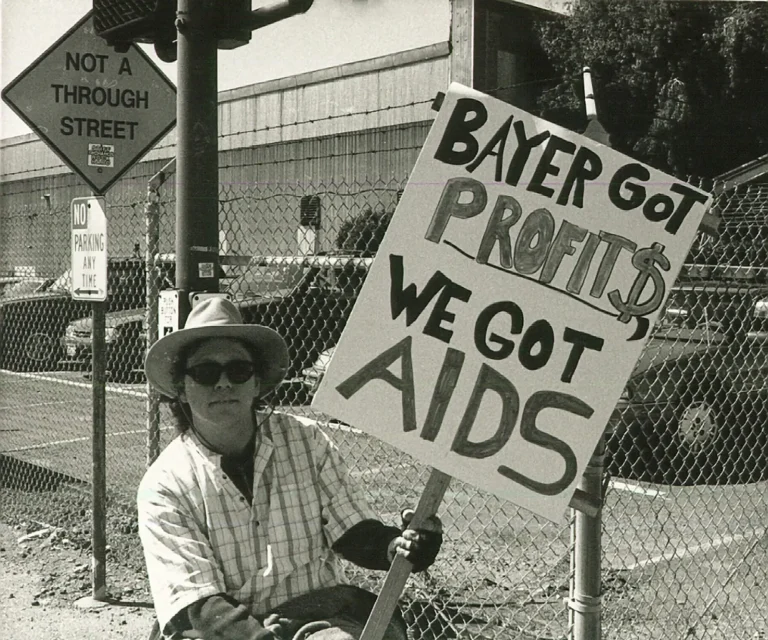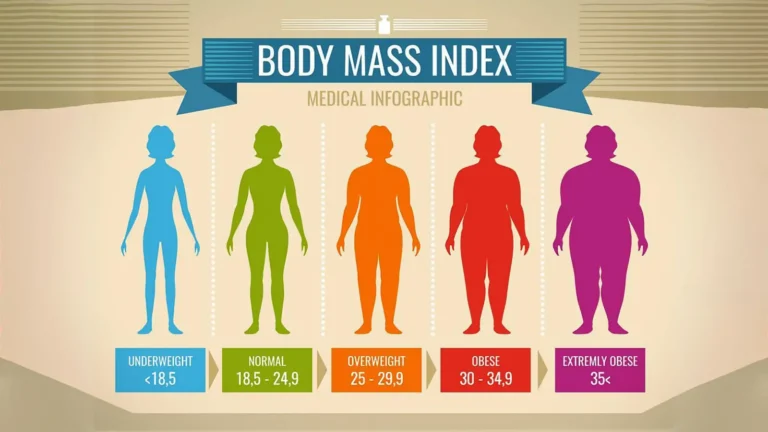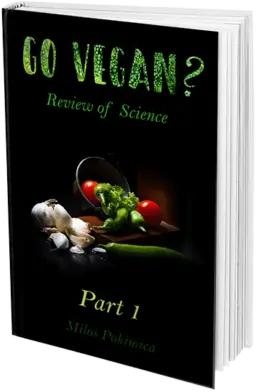La historia de Big Pharma - Bayer (IG Farben), la FDA y el virus del SIDA
Bayer pagó cientos de millones de dólares para poner fin a un escándalo de tres décadas en el que la empresa vendió sangre contaminada con VIH a hemofílicos, miles de los cuales murieron posteriormente de sida.
Milos Pokimica
Escrito por: Milos Pokimica
Revisado Médicamente Por: Dr. Xiùying Wáng, M.D.
Actualizado el 4 de agosto de 2023La ciencia de la nutrición explicó hace décadas todas las conexiones entre las enfermedades de la opulencia y el consumo de alimentos de origen animal. La mayoría de nuestros asesinos número uno se pueden prevenir, pero no hay ningún interés en cambiar la actual línea de negocio. Toda la ciencia disponible se mantendrá al margen del público y, en realidad, no importa.
Lo que la mayoría de la gente conoce no es más que propaganda. Los médicos son buenos, tienen que hacer un juramento hipocrático, están ahí para curarte y ayudarte y, por supuesto, algún día la medicina nos librará de todas las enfermedades. Normalmente, cuando la gente se enfrenta a la verdadera historia que hay detrás de las grandes farmacéuticas y se da cuenta de la verdad que El propio gobierno tiene una red para suprimir la ciencia y el interés individual de los hombres no es su objetivo principal., suelen decir que todo eso pertenece al pasado. Hoy tenemos más democracia y libertades con un mejor control gubernamental, etcétera.
La respuesta es no. Tenemos incluso menos libertades que después de la Segunda Guerra Mundial. Nos han lavado el cerebro en las escuelas y a través de los medios de comunicación impregnados de investigación psicológica para el control social, pero nada más es diferente. La misma estructura existe y ha existido no sólo desde la edad media, sino incluso antes.
Daré otro ejemplo más reciente. Probablemente nunca sabrías que Bayer (IG Farben) pagó “decenas de millones” de dólares para poner fin a un escándalo que duró tres décadas, en el que la empresa vendió productos sanguíneos contaminados con el VIH a hemofílicos, miles de los cuales murieron posteriormente de sida. Bayer se vio finalmente obligada a firmar cheques a las personas que contrajeron el sida porque, en la década de 1980, la sección Cutter Biological de Bayer incumplió la ley federal y reclutó a hombres homosexuales de alto riesgo y consumidores de drogas intravenosas, así como a presos, como donantes de la sangre que Cutter utilizó posteriormente para producir los factores VIII y IX. Se trata de un fármaco, el producto coagulante, que los hemofílicos necesitan para no desangrarse hasta morir. En 1997, Bayer fue condenada a pagar 600 millones a un fondo de compensación para hemofílicos con VIH. Alrededor de 20 000 personas contrajeron el VIH a través de la sangre.
Irónicamente, la nueva aplicación para iPhone de Bayer sobre hemofilia recibió cierta cobertura, al igual que la beca de investigación sobre hemofilia concedida por Bayer a la Universidad de Florida.
El 16 de julio de 1982, los Centros para el Control y la Prevención de Enfermedades (CDC) de Estados Unidos sugirieron que tres hemofílicos habían contraído el SIDA. Los epidemiólogos empezaron a pensar que el virus se propagaba a través de la medicación que los hemofílicos se inyectaban una vez a la semana. La medicación se elaboraba a partir de grandes reservas de plasma donado por diferentes personas. Gran parte del cual se recogía antes de la prueba obligatoria del VIH, a menudo de homosexuales y consumidores de drogas y en algunas prisiones. Sin una prueba de infección, no tenían forma de determinar si los donantes de plasma eran portadores del virus. En enero de 1983, el director del departamento biológico Cutter de Bayer confirmó en una carta que:
“Existen pruebas sólidas que sugieren que el sida se transmite a otras personas a través de... productos plasmáticos”.”
Estas cartas salieron a la luz durante los juicios y fueron encontradas por algunos de los periodistas de investigación que más tarde hicieron pública la noticia. En mayo de 1983, un competidor de Cutter comenzó a producir un concentrado tratado térmicamente que mataba el virus, por lo que Francia, por ejemplo, y muchos otros países decidieron detener todas las importaciones de concentrado coagulante. Cutter temía perder consumidores, por lo que, según un memorándum adjunto: “queremos dar la impresión de que seguimos mejorando nuestro producto sin decirles que pronto también íbamos a tener un concentrado tratado térmicamente”. En junio de 1983, una carta de Cutter a los distribuidores de 20 países decía lo siguiente:
“El sida se ha convertido en el centro de respuestas irracionales en muchos países” y “esto nos preocupa especialmente debido a las especulaciones sin fundamento de que ciertos productos sanguíneos pueden transmitir este síndrome”.”
Mintieron, y muchos países seguían utilizando un concentrado antiguo. En febrero de 1984, Cutter se convirtió en la última de las cuatro principales empresas de productos sanguíneos en obtener la aprobación de Estados Unidos para vender concentrado calentado. Esperaron todo lo posible. Incluso después de que Cutter comenzara a vender el nuevo producto, siguieron fabricando el antiguo durante varios meses más. El motivo era que la empresa tenía varios contratos de precio fijo y pensaba que el producto antiguo sería más barato de producir. Los responsables de Bayer (en respuesta a Cutter) respondieron con otra mentira: “debido a que algunos clientes dudaban de la eficacia del nuevo medicamento”, algunos países tardaron en apoyar el registro del nuevo medicamento. Luego mintieron diciendo que tenían escasez de plasma, que se utiliza para fabricar el medicamento. Por ejemplo, Taiwán fue uno de los países que siguió recibiendo el antiguo medicamento infectado con el VIH. Hsu Chien-wen, funcionario del departamento de salud de Taiwán, declaró en 2003 que Cutter no había solicitado la aprobación para vender el medicamento calentado hasta julio de 1985. Eso fue un año y medio después de haberlo hecho en Estados Unidos. En Hong Kong, por ejemplo, Cutter ni siquiera necesitaba autorización, sino solo una licencia de importación en la década de 1980 para poder importar y vender el nuevo producto, lo que normalmente lleva una semana. En una reunión de la empresa se señala lo siguiente:
“Hay un exceso de inventario”.”
que, en realidad, produjo la resolución de la empresa:
“Revisar nuevamente los mercados internacionales para determinar si se puede vender más de este producto”.”
Debido a la falta de control y a la corrupción, Cutter decidió deshacerse de las existencias de medicamentos antiguos contra el VIH en países del tercer mundo, mientras vendía el nuevo producto, más seguro, en Occidente. Si algunas personas contraen el sida, pueden tomar aspirina para el dolor. Y, por supuesto, hay países del tercer mundo, por lo que encajará bien con los programas eugenésicos de despoblación del planeta. Cuando los hemofílicos de Hong Kong empezaron de repente a dar positivo en las pruebas del VIH, los médicos locales plantearon la cuestión de si Cutter estaba vertiendo medicamentos “contaminados con el sida” en los países menos desarrollados. Cutter rechazó la acusación, insistiendo en que el medicamento antiguo “no presentaba ningún riesgo grave” y que, de hecho, era “el mismo producto de calidad que hemos suministrado durante años”. Hong Kong no se creyó la mentira y, cuando el distribuidor local pidió el producto más nuevo, Cutter respondió que todo el producto nuevo se destinaba a Estados Unidos y Europa. Para Hong Kong y otros países del tercer mundo, podían hacer una excepción con una pequeña cantidad para los “pacientes más vocales”. Es decir, personas influyentes que podrían suponer un problema para ellos. Así que, si eres hijo de un político, te darán el producto nuevo y seguro.
La Administración de Alimentos y Medicamentos de Estados Unidos contribuyó a que la noticia no trascendiera a la opinión pública. El gobierno no está ahí para protegerte y nunca lo ha estado. En mayo de 1985, el regulador de productos sanguíneos de la FDA, Harry M. Meyer Jr., considerando que las empresas habían violado un acuerdo voluntario para retirar el antiguo medicamento del mercado, llamó a los directores de las corporaciones y les ordenó que cumplieran. Las notas internas de Cutter de su reunión muestran que Meyer exigió que la cuestión fuera:
“Resuelto discretamente sin alertar al Congreso, a la comunidad médica ni al público”.”
También señaló que la FDA quería que el asunto se resolviera “rápida y discretamente”. También en ese momento, un responsable de Cutter escribió que:
“Parece que ya no hay mercados en Extremo Oriente donde podamos esperar vender cantidades sustanciales de medicamentos no tratados térmicamente”.”
Venden medicamentos contaminados con el VIH durante el mayor tiempo posible sin mostrar ninguna empatía. Los efectos de todo esto son imposibles de calcular porque no existían pruebas para detectar el VIH, por lo que no sabemos cuántas personas se infectaron con el VIH antes de que Cutter comenzara a vender su medicamento más seguro o después. Cutter también vendió el medicamento antiguo en Argentina, Indonesia, Japón, Malasia y Singapur después de febrero de 1984. Cutter envió más de 100 000 viales de concentrado sin calentar, por un valor superior a $4 millones, después de comenzar a vender el producto más seguro. Las ventas continuaron, en parte debido al deseo de Cutter de agotar las existencias del medicamento antiguo y, en parte, debido a los contratos de precio fijo, por los que la empresa creía que el producto antiguo sería más barato de fabricar. El Departamento de Justicia de los Estados Unidos nunca había investigado a ningún ejecutivo de la empresa. En el pasado, Bayer incluso comercializó heroína para niños. Ese es el nivel de psicopatía de estas personas.
Referencias:
Pasajes seleccionados de un libro: Pokimica, Milos. ¿Te haces vegano? Revisión de la Ciencia Parte 2. Kindle ed., Amazon, 2018.
- McHenry L, Khoshnood M. Dinero manchado de sangre: el inventario de Bayer de productos sanguíneos contaminados con VIH y los hemofílicos del tercer mundo. Account Res. 2014;21(6):389-400. doi: 10.1080/08989621.2014.882780. PMID: 24785997.
- Josefson D. Haemophilia patients launch action against Bayer over contaminated blood products. BMJ. 2003 Jun 14;326(7402):1286. doi: 10.1136/bmj.326.7402.1286-g. PMID: 12805147; PMCID: PMC1151015.
Contenidos Relacionados
¿Tienes alguna duda acerca de la nutrición y la salud?
Me encantaría saber de usted y responderlas en mi próxima publicación. Agradezco sus aportes y opiniones y espero tener noticias suyas pronto. También te invito a síguenos en Facebook, Instagram y Pinterest para más contenidos sobre dieta, nutrición y salud. Puedes dejar un comentario allí y conectar con otros entusiastas de la salud, compartir tus consejos y experiencias, y recibir apoyo y ánimo de nuestro equipo y nuestra comunidad.
Espero que este post le haya resultado informativo y ameno y que esté preparado para aplicar los conocimientos adquiridos. Si le ha resultado útil, por favor compártelo con tus amigos y familiares que también podrían beneficiarse de ella. Nunca se sabe quién puede necesitar orientación y apoyo en su camino hacia la salud.
– También Te Puede Interesar –

Aprenda Sobre Nutricion
Milos Pokimica es doctor en medicina natural, nutricionista clínico, escritor sobre salud médica y nutrición y asesor en ciencias de la nutrición. Autor de la serie de libros Go Vegan? Revisión de la Ciencia, también dirige el sitio web sobre salud natural GoVeganWay.com.
Descargo De Responsabilidad Médica
GoVeganWay.com le ofrece reseñas de las últimas investigaciones relacionadas con la nutrición y la salud. La información proporcionada representa la opinión personal del autor y no pretende ni implica sustituir el asesoramiento, diagnóstico o tratamiento médico profesional. La información proporcionada tiene fines informativos únicamente y no pretende sustituir la consulta, el diagnóstico y/o el tratamiento médico de un médico o proveedor de atención médica calificado.NUNCA ignore el CONSEJO MÉDICO PROFESIONAL O RETRASAR la BÚSQUEDA de TRATAMIENTO MÉDICO a CAUSA DE ALGO QUE HAYA LEÍDO EN O accesibles a TRAVÉS de GoVeganWay.com
NUNCA APLICAR CUALQUIER cambio de ESTILO de vida O CAMBIOS EN su totalidad COMO UNA CONSECUENCIA DE ALGO QUE HA LEÍDO EN GoVeganWay.com ANTES de CONSULTAR con LICENCIA PROFESIONAL MÉDICO.
En el caso de una emergencia médica, llame a un médico o al 911 inmediatamente. GoVeganWay.com no se recomienda ni aprueba ninguna de los grupos, las organizaciones, las pruebas, los médicos, productos, procedimientos, opiniones u otra información que pueda ser mencionado en el interior.
Selecciones del editor –
Milos Pokimica es escritor especializado en salud y nutrición y asesor en ciencias nutricionales. Autor de la serie de libros Go Vegan? Revisión de la Ciencia, también dirige el sitio web sobre salud natural GoVeganWay.com.
Últimos artículos -
Top Noticias De Salud — ScienceDaily
- Scientists find dark chocolate ingredient that slows agingen diciembre 12, 2025
Scientists have uncovered a surprising link between dark chocolate and slower aging. A natural cocoa compound called theobromine was found in higher levels among people who appeared biologically younger than their real age.
- Nerve injuries can trigger hidden immune changes throughout the entire bodyen diciembre 12, 2025
Researchers discovered that nerve injuries can alter the immune system throughout the body, and males and females react very differently. Male mice showed strong inflammatory responses, while females showed none, yet both transmitted pain-inducing signals through their blood. These findings reveal previously unknown pathways driving pain, especially in females. The work points toward new opportunities for personalized chronic pain therapies.
- NAD+ supplement shows early promise for long COVID fatigue and brain fogen diciembre 12, 2025
Long COVID still affects people worldwide with stubborn symptoms like fatigue and cognitive issues. A clinical trial tested whether boosting NAD+ using nicotinamide riboside could help. Although overall group differences were limited, many participants showed encouraging improvements after taking NR for at least 10 weeks. The findings suggest NAD+ enhancement may offer symptom relief for some individuals.
- Stressed rats keep returning to cannabis and scientists know whyen diciembre 11, 2025
Rats with naturally high stress levels were far more likely to self-administer cannabis when given access. Behavioral testing showed that baseline stress hormones were the strongest predictor of cannabis-seeking behavior. Lower cognitive flexibility and low endocannabinoid levels also contributed to increased use. The results hint at possible early indicators of vulnerability to drug misuse.
- Even moderate drinking carries a bigger cancer risk than you thinken diciembre 11, 2025
Researchers found that both how often and how much someone drinks significantly shape their cancer risk, even at moderate levels. Vulnerability varies across groups, with genetics, socioeconomic status, obesity, and lifestyle behaviors amplifying harm. The review also uncovered gender differences, beverage-specific risks, and biological pathways that intensify cancer development.
- Scientists uncover a hidden protein behind deadly mystery diseasesen diciembre 11, 2025
Scientists discovered that the protein RPA plays a critical and previously unconfirmed role in stimulating telomerase to maintain long, healthy telomeres. When RPA malfunctions, telomeres can shorten dangerously, leading to serious diseases.
- Gene-edited CAR-T cells erase aggressive T-cell leukemiaen diciembre 11, 2025
A cutting-edge therapy using base-edited immune cells is offering a major breakthrough for patients with one of the toughest forms of blood cancer, T-cell acute lymphoblastic leukaemia. By precisely rewriting tiny sections of DNA, scientists at UCL and Great Ormond Street Hospital created universal CAR T-cells capable of targeting the cancer without harming themselves—a long-standing challenge in T-cell–based therapies. Early trial results show deep, long-lasting remissions, including in […]
PubMed, #Dieta vegana –
- Healthful and Unhealthful Plant-Based Diets and Their Association with Cardiometabolic Targets in Women Diagnosed with Breast Cancer: A Cross-Sectional Analysis of a Lifestyle Trialen diciembre 11, 2025
CONCLUSIONS: Maintaining cardiometabolic risk factors within normal ranges is clinically relevant in BCS, and this may be more likely when a plant-based diet is consumed, especially if low in unhealthy plant foods.
- Dietary and Lifestyle Patterns and Their Associations with Cardiovascular and Inflammatory Biomarkers in Vegans, Vegetarians, Pescatarians, and Omnivores: A Cross-Sectional Studyen diciembre 11, 2025
Background: Plant-based diets are associated with reduced cardiometabolic risk, yet the influence of lifestyle behaviors on these benefits remains insufficiently understood. Objective: To assess the combined impact of dietary patterns and lifestyle behaviors on body composition, lipid profiles, and inflammatory biomarkers in healthy young adults. Methods: In this cross-sectional study, 155 participants aged 18-39 years were categorized into four dietary groups: vegans (n = 48), vegetarians (n […]
- Functional and Nutritional Properties of Lion’s Mane Mushrooms in Oat-Based Desserts for Dysphagia and Healthy Ageingen diciembre 11, 2025
Hericium erinaceus (Lion’s Mane mushroom) is a medicinal species recognised for its neuroprotective and antioxidant properties. This study investigated its potential as a functional ingredient in oat milk-based desserts formulated for individuals with dysphagia. Freeze-dried Lion’s Mane powder (LMP), containing high-quality protein (~16%, amino acid score 88%), dietary fibre (~31%), and phenolic compounds (72.15 mg GAE/g), was incorporated at varying levels using gelatin or iota-carrageenan […]
- “A football team with no midfield”: A qualitative analysis of anti-vegan stigma in Italyen diciembre 7, 2025
A growing body of research has demonstrated the prevalence of unfavourable attitudes towards individuals who adhere to a vegan diet and has provided empirical evidence to support the existence of an anti-vegan ideology. The present study aims to contribute to extant knowledge by examining the social perception of veganism and vegans in Italy. Italy is a nation characterised by a traditional culture of food that serves as a significant catalyst for collective identification and national pride….
- Plant-based dietary index on the Mediterranean and a vegan diet: a secondary analysis of a randomized, cross-over trialen diciembre 5, 2025
CONCLUSION: These findings suggest that, replacing animal products even with the “unhealthful” plant-based foods on a vegan diet was associated with weight loss.
Publicaciones aleatorias –
Publicaciones destacadas -

La última versión desde PubMed, #Dieta basada en plantas –
- Bioactive Nutritional Components Within the Planetary Health Diet for Preventing Sarcopenic Obesity and Diabetic Sarcopenia: A Systematic Reviewpor Lia Elvina en diciembre 11, 2025
CONCLUSIONS: PHD-aligned foods combining plant proteins, polyphenols, and fermented products strengthen nutrient sensing, mitochondrial efficiency, and cellular resilience, representing a sustainable nutritional framework for preventing and managing SO and DS.
- Ultra-Processed Foods Consumption, Mediterranean Diet Adherence and Sociodemographic Correlates in an Italian Adult Population: The UFO Surveypor Emilia Ruggiero en diciembre 11, 2025
Background: Although national surveys report increasing ultra-processed foods (UPFs) consumption, updated estimates for Italy are lacking. Given the central role of the Mediterranean Diet (MD), understanding how UPFs contribute to the contemporary Italian diet is essential. This study quantified UPF intake in a convenience sample of Italian adults and examined its main sociodemographic correlates, including MD adherence. Methods: A web-based cross-sectional survey was conducted among Italian…
- High-Salt Diets, Intestinal Barrier, and Hypertension: A Mechanistic Review and the Promise of Dietary Therapypor Wenhao Si en diciembre 11, 2025
Hypertension is a major public health problem worldwide, and high-salt diets are one of the main causes of hypertension. The intestinal mucosal immune system is the largest immune organ in vertebrates. Hypertension was associated with increased intestinal permeability and an inflammatory state. The bacterial communities attached to the intestinal mucosa played a significant role in the development and maturation of the autoimmune system, as well as inflammation and immunity to disease. In […]
- Health-Promoting Potential of the Mediterranean Diet and Challenges for Its Application in Aging Populationspor Marta Cianciabella en diciembre 11, 2025
The Mediterranean Diet (MD) is a lifestyle that involves not only dietary habits, well known for their effectiveness in preventing health risks by supplying well-balanced foods rich in bioactive compounds, but also daily habits that improve the quality of life. Older adults represent a segment of the population that can particularly benefit from this dietary pattern. However, the specific characteristics and needs of older individuals require a critical analysis of aspects that may limit…
- Association of Mediterranean Diet Scores with Psychological Distress in Pregnancy: The Japan Environment and Children’s Studypor Yuri Takahashi en diciembre 11, 2025
Background/Objectives: Perinatal mental disorders are important health issues that affect both mothers and their children. The Mediterranean diet (MD) is one of the most well-recognized healthy dietary patterns worldwide. Recent evidence suggests that MD may prevent or reduce the risk of perinatal mental disorders. This study investigated the association between MD adherence during pregnancy and psychological distress in a large cohort of Japanese births. Methods: Data were obtained from […]
- Protective Role of Ginsenoside F1-Enriched Extract (SGB121) in Metabolic Dysfunction-Associated Fatty Liver Disease (MAFLD)por Bo Yoon Chang en diciembre 11, 2025
Introduction/Objectives: Ginsenoside F1, a pharmacologically active saponin derived from Panax ginseng, exhibits diverse bioactivities, but its use is limited because it is difficult to purify and has high production costs. To overcome these challenges, a ginsenoside F1-enriched extract named SGB121 was developed. This study aimed to evaluate the therapeutic efficacy of SGB121 in a high-fat, high-carbohydrate (HFHC) diet-induced metabolic dysfunction-associated fatty liver disease (MAFLD) […]
